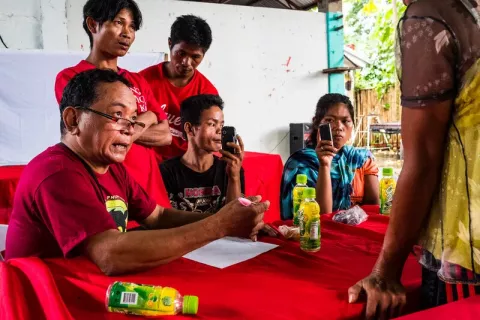Did you know there are millions of Filipinos working globally?
There are also millions more who work with customers, colleagues and clients around the world but virtually, from the Philippines.
As a result, more of us are encountering Filipinos at work, especially if you work in the BPO industry.
Learning a bit about the Filipino communication style is important, and this is what we get paid to do by clients.
Below we have shared insights into Filipino communication preferences.
These are relevant if you are working virtually with Filipinos as well in a face-to-face workplace environment.
The Philippines: Cultural Context
All cultures have slightly different communication styles.
The Filipino communication style is, however, unique and distinct. It has been shaped by the country's particular location, its history, cultures, traumas and traditions.
Filipinos are known for their warmth, friendliness, and hospitality, and these traits are reflected in the way they communicate with one another. It is respectful, kind and generally soft in nature.
The local cultures value strong interpersonal relationships and place a high priority on maintaining social harmony. They can be highly expressive and emotional and use language to convey their thoughts, feelings, and emotions.
Filipino Communication Traits
Filipinos place a high value on family and kinship ties. Family is seen as the cornerstone of society, and relationships with relatives are often prioritized over other social relationships.
This value is reflected in the way people communicate, with language used to maintain and strengthen family ties, express love and affection, and share important news and information with one another.
Filipinos also place a strong emphasis on faith and spirituality, with the majority of the population being observant Catholics.
This religious tradition shapes the way Filipinos communicate, with language often used to express gratitude, ask for forgiveness, seek guidance, and share spiritual experiences with others.
Values and the Filipino Communication Style
A good lens through which to try and understand a culture’s communication style is through values.
Below are 3 core Filipino values that can help explain how and why the people communicate in the way they do.
1. pakikisama
One key value that underpins Filipino communication is pakikisama, which translates to "getting along with others" or "being one with the group."
This value emphasizes the importance of social relationships and the need to establish and maintain harmonious relationships with others. Filipinos use a range of communication strategies to achieve this, including indirect communication, nonverbal cues, and the use of humor to defuse tension and create a sense of camaraderie.
2. utang na loob
Filipinos also value utang na loob, which means "debt of gratitude."
This value emphasizes the importance of reciprocating kindness and favors and maintaining a sense of obligation to those who have helped us in the past. Filipinos often use language to express gratitude and to show respect and deference to others, particularly those in positions of authority or those who are older or more experienced.
3. bayanihan
Another key value that shapes Filipino communication is bayanihan, which emphasizes the importance of community and collective action.
Filipinos value cooperation, collaboration, and mutual support and often work together to achieve shared goals or overcome common challenges. Communication plays a crucial role in facilitating this cooperation, with Filipinos often using language to build consensus, negotiate differences, and create a shared sense of purpose and identity.
![]()
Want help navigating Filipino business culture?
Then buy access to our market-leading eLearning course on Filipino business culture.
Access it online, 24/7, 365 days a year.
